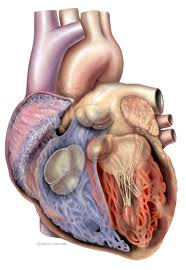Common Labor Hormone Harmful?
After delivering over 1000 babies as Board-certified ob-gyn, many of these babies with the use of Pitocin, I have heard concerns about this drug from hundreds of pregnant moms-to-be.
Most women want to know if the medication is necessary.
This is really the most important question, and it speaks to the issue of appropriate obstetric indication for this, or any other, intervention.
Pitocin is the synthetic brand name of the labor hormone, Oxytocin.
This is the hormone that causes the uterus to contract during labor, and to contract after delivery, preventing postpartum hemorrhage.
When Pitocin is used prior to delivery, it is used either to induce labor, or to augment (or strengthen) labor that has slowed down or stalled completely.
The medication is given through an IV, and is run through a pump that regulates the dose and the frequency with which the dose is increased. Nurses and obstetricians and other trained obstetric personnel monitor the well-being of the pregnant woman and the fetus closely whenever Pitocin is used.
This recent study is the first time that the effects of Pitocin on the fetus were studied. Though this was a relatively small, retrospective study, the results did reveal that women who were given Pitocin to induce or augment their labors did have an increased risk of having a baby with lower Apgar scores or who required admission to the NICU.
These findings suggest an association of Pitocin use with these outcomes but did NOT reveal a cause and effect between use of this drug and these fetal outcomes.
Folklore regarding Pitocin use extends equally amongst obstetricians and moms alike. Many women feel Pitocin causes worse pain during labor than labor without Pitocin. Many obstetricians feel a contraction caused by Pitocin is no different than a ‘natural’ contraction.
As an obstetrician AND a mom who has two babies (one with and one without Pitocin), I did not experience any difference in my two labor experiences. However, every woman is different, and every woman is entitled to her own subjective experience and opinions thereof.
What complicates the opinions of this mainstay drug in modern obstetrics is that there are many other factors that enter into a pregnant woman’s labor and delivery experience, and one of the greatest is the reason or indication for Pitocin’s use in the first place.
It is important to remember that when labor has stalled, intervention MUST occur or both the mother and the fetus could die of sepsis or severe infection that will occur if delivery does not occur. In this situation, use is indicated and appropriate.
If labor is being induced (for a medically valid reason), Pitocin use is indicated and appropriate. If a doctor is anxious to leave the hospital and starts Pitocin to accelerate the timeline of labor, that is inappropriate. These are extreme examples but there are plenty of times in L&D that Pitocin is used for “gray zone” indications.
Risks of Pitocin include contractions that are too close together and that don’t give the uterus a chance to relax and recover, which can result in fetal distress.
Maternal risks of the medication are water intoxication, pulmonary edema and abnormal sodium levels. The bottom line is that if Pitocin is recommended, a pregnant woman has every right to ask why, what the indications are, and if there are any reasonable options.
Every single drug has risks and benefits. Aspirin can save a life if you are having a heart attack, but it can also cause severe internal bleeding. Pitocin is no different: it can and is a safe medication, but it can also cause problems if not administered properly.
There is an art to the practice of Obstetrics and the team involves the health care professional, the mom-to-be AND the fetus. The process of labor and delivery can be a straight-forward natural one, or it can be very complex and require extremely sophisticated intervention to achieve the ultimate goal: a healthy baby and a health mother.
Source: Jennifer Ashton M.D.


